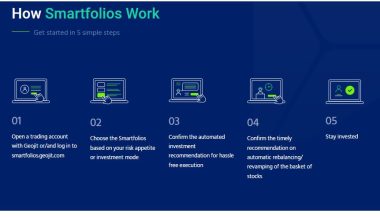Diversification is the hallmark of good investing. And if you are looking for a diversified mutual fund that can combine the benefits of debt and equity. Then look no further than hybrid mutual funds because when you invest in different kinds of securities, your risks and returns are balanced out.
What is a hybrid mutual fund?
Hybrid mutual funds, previously called balanced mutual funds, invest in a mix of debt, equity and at times gold instruments to provide investors a diversified portfolio that provides good returns while reducing risk. Each component of investment has a specific role to play in the fund. While equity investments aim to provide better returns and capital appreciation for long term, debt investments provide a risk balance and also a steady stream of income. This category of funds is classified based on the percentage of investment into equity and debt named as equity-oriented hybrid and debt oriented hybrid funds.
Types of Hybrid Mutual Funds
- Conservative Hybrid Funds: These funds invest between 10% and 25% in equity with a higher allocation of the investments in debt instruments. A very conservative investor who wishes to taste the benefit of equity investment and beat fixed income returns can opt for this category.
- Balanced Hybrid Funds: Between 40% to 60% of the fund’s investments are in equity instruments while the remaining are in debt instruments. This keeps a fine balance between equity and debt and is suitable for moderate risk-taking investors who have a long-term investment horizon.
- Aggressive Hybrid Funds: In these funds, up to 80% of investment is in equities while the remaining is in debt instruments. Advisable for long term investments.
- Dynamic Asset Allocation Funds/Balanced Advantage Funds: These funds are managed dynamically and investment in equities and debt instruments depends upon the market conditions.
- Multi Asset Allocation Funds: These funds invest a minimum of 10% of the portfolio in at least three asset classes and manage the allocation according to the prevailing market condition. These funds usually invest in equity, debt and gold related instruments including ETFs.
- Arbitrage Funds: These funds work by profiting from the price difference between the cash market and the futures market. i.e these funds purchase stocks in the cash market and simultaneously sell it in the futures market. They have a minimum of 65% of gross exposure to equity and the rest in debt and money market instruments.
- Equity Savings Funds: These funds invest in equity, debt and arbitrage opportunities in the cash and derivative segment of the equity market. These funds can help in long term wealth creation.
Features of hybrid mutual funds
- Hybrid mutual funds invest in equity as well as debt instruments. In doing so, they provide you a diversified investment option.
- They provide higher returns than debt funds while carrying lower risk than equity funds.
- Hybrid mutual funds have a predefined ratio of equity and debt investments. This way, you can choose the amount of risk exposure you want.
- The fund managers of these funds automatically rebalance the portfolio during market fluctuations.
Why invest in hybrid mutual funds?
- They provide automatic portfolio diversification.
- They balance out risk and returns.
- They provide a hedge against inflation.
- Investments are automatically rebalanced according to market conditions.
Hybrid mutual funds are good investment avenues for investors who don’t want to invest in pure equity funds but still want to enjoy better returns compared to debt funds. Depending on your risk appetite, you can choose which kind of fund you want to invest in. To make an informed decision about which fund to invest in, you can view our list of recommended funds.







